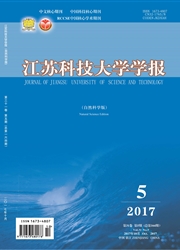

 中文摘要:
中文摘要:
近来数次大地震中出现大量的砂砾土液化震害,饱和砂砾土的地震液化问题越来越引起重视。针对砂砾土的抗液化强度问题,开展了4种砾含量、3种相对密度情况下,饱和砂砾土的小型土箱振动台试验研究。为获得较为合理的抗液化强度结果修正了由加速度计倾斜产生的加速度时程漂移,并描述了土体中加速度和动孔压发展特性。饱和砂砾土的抗液化强度结果显示:含砾量和相对密度对饱和砂砾土的抗液化强度均有明显影响。饱和砂砾土的抗液化强度随着含砾量和相对密度的增加明显增大,增大的趋势越来越明显,且明显高于相近相对密度的饱和砂土的抗液化强度。
 英文摘要:
英文摘要:
Due to many cases of the liquefaction of sand-gravel soils induced by recent earthquakes, more and more attention is paid to the liquefaction of sand-gravel soils. Aiming at this problem, the small soil-box shaking table tests are performed using saturated sand-gravel soils with 4 kinds of gravel contents and 3 kinds of relative densities. In the process of analysis, firstly, the acceleration drift caused by the tilt of acceleration sensor is amended in order to obtain the rational results, and then the characteristics of the accelerations and dynamic pore water pressures(DPWP) are described. The results of the liquefaction resistance of the sand-gravel soil show that the gravel content and the relative density of the soil have obvious effects on the liquefaction resistance of sand-gravel soils. The more the gravel content and relative density, the greater the liquefaction resistances of the soils, and the greater the variances of liquefaction resistance. For similar relative density, the liquefaction resistances of saturated sand-gravel soils are obviously greater than those of saturated sand.
 同期刊论文项目
同期刊论文项目
 同项目期刊论文
同项目期刊论文
 期刊信息
期刊信息
